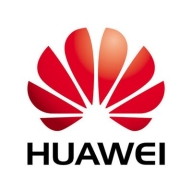


Huawei OceanStor and Dell PowerMax compete in the enterprise storage market. Dell PowerMax appears to have the upper hand in terms of advanced features and cutting-edge technology, while Huawei OceanStor offers a more budget-friendly option with excellent value-for-money propositions.
Features: Huawei OceanStor is recognized for its flexibility and hybrid storage capabilities, notably through efficient space use via tiering and horizontal scalability. The solution's stability, comprehensive support, and ease of management are key attractions. Dell PowerMax excels with a focus on performance, near-zero downtime, and enterprise-level availability. Its advanced data reduction, NVMe support, and robust replication features, along with extensive analytics, are top features driving its attractiveness for mission-critical applications.
Room for Improvement: Huawei OceanStor could work on improving management simplicity, strengthening integration with cloud technologies, and enhancing technical support quality. There's also a need to address issues related to documentation transparency and energy efficiency. Dell PowerMax, while robust, faces challenges with complex management tools and stability issues. Users seek better pricing, easier cloud integration, and more user-friendly tools.
Ease of Deployment and Customer Service: Huawei OceanStor provides a straightforward deployment mainly for on-premises environments. Although some challenges arise with technical support responsiveness and language barriers, it generally offers a decent deployment experience. Dell PowerMax also deploys effectively across different environments but features complexities in support frameworks. Both products highlight the importance of improved and more intuitive support systems.
Pricing and ROI: Huawei OceanStor offers competitive pricing, making it more affordable compared to premium options, with a focus on value propositions like perpetual licensing and notable ROI. Dell PowerMax, priced at a higher tier, justifies its cost through superior features and performance. Though some users call for better pricing models, PowerMax's advanced capabilities are seen as aligning well with enterprise-grade needs, offering performance improvements and operational cost savings.
If you wait more than seven years to buy another one, you get a return on your investment.
During a DCDR setup and migration from VMAX to Dell PowerMax, what was planned as a two-day downtime was completed in just three to four hours.
The performance metrics or benchmarks I use to measure success with Dell PowerMax include uptime as well as our response times on our platforms, both of which are exactly where we want them to be, which is five nines and as fast as possible.
My client has seen significant ROI since the install, and when you don't go down, that's an ROI in and of itself.
Customers always have their issues resolved promptly.
Technical support is good at least through vendors, not directly with the principal.
I would rate Dell PowerMax support as a ten, as I have never had an issue with Dell support as it relates to this product.
ProSupport Next Business Day offers part replacement within four hours for data leaks.
Dell support for Dell PowerMax is exceptional, rating a perfect 10 out of 10.
Huawei took longer to respond and send a new device when something critical happened.
It hasn't broken down anytime in the last six to seven years, despite hurricanes, earthquakes, and power outages.
Scalability is not an issue.
Dell PowerMax is good for enterprises, and it also depends on how much workload you're going to bring in on Dell PowerMax in terms of performance and how many users are going to use the database you're hosting.
PowerScale is better suited for AI and overall buzz solution currently.
Huawei OceanStor is capable of scaling up to a few megabytes and is equipped to handle varied network protocols.
I would rate the stability of the product at seven out of ten.
These patches can be applied on the fly without requiring software upgrades or system downtime.
I would rate it nine out of ten since there are no required downtimes, even during firmware upgrades.
There has been no downtime with Dell PowerMax; it's been extremely reliable, easy to manage, easy to upgrade, and trustworthy as we've upgraded over the years from one version to another.
Huawei OceanStor is stable and reliable for storage solutions.
Other than the data store running out of space, I haven't had any issues with the technology.
One way to improve the product is to add an operational assistant that doesn't depend on VMware.
I would like to see some AI features that would allow arrays to intelligently identify threats or unusual behavior in the data pattern and give an alert.
Storage replication should be essential.
Compared to competitors such as NetApp, which integrates with public cloud hyperscalers (GCP, Azure, AWS), Dell PowerMax lacks in this aspect.
Dell can assist by providing plug-and-play integrated templates that allow customers to drag, drop, modify, and connect with any target system for generating snapshots without logging into the storage directly.
Dell PowerMax NVMe is very reliable storage and cannot experience downtime.
Huawei currently lacks a solution for high-performance AI, unlike other companies like DDN, WekaIO, or IBM BlueStore.
The stated capacity was not a true reflection of the actual capacity.
While the prices may be higher than those of other vendors, we see it as a market leader with benefits.
The support can be a bit pricey, but the solution is more cost-effective than anything else out there.
The higher cost compared to other vendors is justified by additional features, vendor-managed upgrades, and superior support services.
It is the best choice for large projects in terms of price and features compared to midrange solutions.
The price is starting from $500,000.
Huawei is priced competitively, encouraging companies to consider it over other products.
Huawei OceanStor's pricing is very aggressive, making it highly competitive.
Its data compression feature is the best that we have ever seen.
Pure FlashArray X NVMe helps to improve our processing speed.
We are satisfied with the performance as it is significantly faster compared to traditional storage options.
NVMe provides additional fast cache, similar to random access memory (RAM), which improves overall system performance and read/write experience for users.
Dell PowerMax NVMe is very supportive of our operational growth since we require daily performance from our core banking systems and need to facilitate data movement efficiently.
The key benefits of using Dell PowerMax, quantified in terms of saved hours and saved costs, is having one single platform that provides functionality to all of our internal customers.
Huawei OceanStor offers good IOPS and is reliable and energy-efficient.
The main selling point of Huawei OceanStor is its ability to handle all storage protocols, including block, file, and object.
| Product | Market Share (%) |
|---|---|
| Dell PowerMax | 4.8% |
| Huawei OceanStor | 2.3% |
| Pure FlashArray X NVMe | 1.4% |
| Other | 91.5% |



| Company Size | Count |
|---|---|
| Small Business | 15 |
| Midsize Enterprise | 11 |
| Large Enterprise | 12 |
| Company Size | Count |
|---|---|
| Small Business | 17 |
| Midsize Enterprise | 15 |
| Large Enterprise | 55 |
| Company Size | Count |
|---|---|
| Small Business | 26 |
| Midsize Enterprise | 8 |
| Large Enterprise | 7 |
Pure Storage FlashArray//X is the world’s first enterprise-class, all-NVMe flash storage array. It represents a new class of storage – shared accelerated storage, which is a term coined by Gartner – that delivers major breakthroughs in performance, simplicity, and consolidation.
PowerMax leads in mission-critical enterprise storage with advanced architecture and AI-driven automation, ensuring secure and efficient IT optimization. Its multi-node NVMe scale-out framework delivers unmatched performance and consolidation, backed by Dell’s Future-Proof Program.
PowerMax is renowned for its robust reliability, performance, and efficient data reduction capabilities. Users benefit from its NVMe architecture, aiding significant scalability and cost efficiency through effective deduplication and compression. Unisphere simplifies management, while CloudIQ provides enhanced monitoring. With high availability and strong IOPS capabilities, PowerMax effectively manages demanding workloads and ensures seamless operations. Its compact design and increased storage capacity enhance user experience, particularly with easy maintenance and robust performance.
What are the key features of PowerMax?Dell PowerMax is predominantly employed in mission-critical applications such as SQL, Oracle databases, ERP systems, and high transactional environments. Healthcare, finance, and e-commerce sectors leverage its high performance, scalability, and NVMe technology for low latency and redundancy. It is adept in storage consolidation, data analytics, and disaster recovery.
OceanStor Dorado V3 is the industry's first all-flash storage that puts NVMe into commercial use. It is specially designed for enterprises' mission-critical businesses, meeting the most-demanding performance and reliability requirements of databases, VDI, server virtualization, and SAP HANA.
We monitor all All-Flash Storage reviews to prevent fraudulent reviews and keep review quality high. We do not post reviews by company employees or direct competitors. We validate each review for authenticity via cross-reference with LinkedIn, and personal follow-up with the reviewer when necessary.